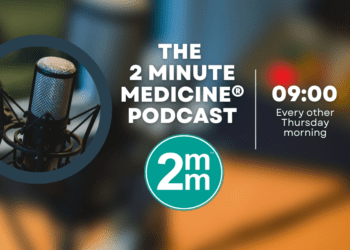Steep decline in post-operative opioid prescriptions for common pediatric surgeries
1. Analysis of over 124,000 patients undergoing common pediatric surgical procedures from 2014-2019 identified noteworthy decreases in the likelihood of receiving an opioid prescription, the amount of opioids prescribed, and the likelihood of receiving a refill of an opioid script.
2. A previously gradual decrease in post-operative opioid prescriptions from 2014-2017 accelerated significantly in late 2017 and early 2018 across all pediatric age groups.
Evidence Rating Level: 2 (Good)
Study Rundown: Expert panels have suggested limiting or forgoing opioid prescriptions after common pediatric surgical procedures. However, little data about opioid prescribing trends is readily available. Utilizing a retrospective cohort acquired from a national private insurance database, researchers analyzed the charts and prescriptions of over 124,000 opioid naïve patients aged 0-18 years who underwent a common pediatric surgery associated with mild to moderate pain. From April 2014 to March of 2019, the percentage of patients filling an opioid prescription within one week of surgery, the amount of medication prescribed, and the percentage of patients who received a refill decreased substantially across all age groups. Joinpoint regression identified a rapid decline in the number of patients prescribed opioids and the amount of opioids prescribed starting in quarter 4 of 2017, a significant acceleration of a gradual downward trend in opioid prescribing observed from 2014-2017. Though this retrospective cohort analysis has no utility in assessing causality, the large sample size and robust controls for age, sex, comorbidities, and type of surgery provide compelling evidence of more judicious post-operative opioid prescribing practices, particularly near the end of 2017. The etiology of this change – recent consensus guidelines for post-operative analgesia in pediatric surgery, adoption of national recommendations for more stringent opioid prescribing practices for adults, or changing attitudes regarding multimodal pain control – merits further study.
Click to read the study in PEDIATRICS
Relevant Reading: Guidelines for opioid prescribing in children and adolescents after surgery: an expert panel opinion
In-Depth [retrospective cohort]: Researchers interrogated a national private insurance database for all patients <18 years-old claiming a surgery between April 2014 and March 2019. Patients were stratified into 11-17 years old (“adolescent”), 5-10 years old (“school-aged”) and <5 years old (“pre-school”). Eight common surgeries – tonsillectomy, adenoidectomy, appendectomy, cholecystectomy, dental surgery, knee arthroscopy, circumcision, and orchiopexy – were selected. For each age group, only those surgeries that occurred at a rate of >100/year for all five years of the study period were analyzed. Primary endpoints were the percent of patients prescribed opioids, the amount of opioids prescribed in morphine equivalents (MME) and in days prescribed, and percentage of patients prescribed a refill. Percentage of patients filling a post-operative opioid prescription decreased across all age groups from the start to the end of the study period: adolescents saw a decrease from 78% (95% CI 76-80%) to 48% (46-50%), school-aged from 54% (52-56%) to 26% (24-28%), and pre-school from 30% (29-32%) to 12% (10-13%). Morphine equivalents prescribed, days of opioids prescribed, and percentage receiving a refill showed near-identical trends, p<0.001 for all metrics and age groups. Joinpoint regression identified a faster rate of decline in percentage of patients prescribed opioids, starting Q4 of 2017 in adolescents (0.47% decrease prior, 8.3% decrease after, p<0.001) with near-identical accelerations seen for school-aged children and pre-school age children in Q2 and Q3 of 2018, respectively.
Image: PD
©2022 2 Minute Medicine, Inc. All rights reserved. No works may be reproduced without expressed written consent from 2 Minute Medicine, Inc. Inquire about licensing here. No article should be construed as medical advice and is not intended as such by the authors or by 2 Minute Medicine, Inc.






